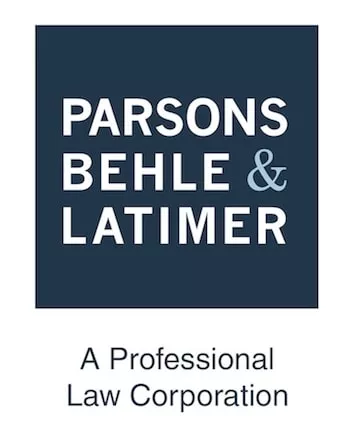Is Your Employee Handbook Ready for 2024?
The holidays are in full swing, and many human resource professionals are making their lists and checking them twice, working to update their employee handbooks for 2024. If a new employee handbook is on your wish list, here are a handful of important 2023 developments in federal and state employment laws that you may want to keep in mind.
- In August, the National Labor Relations Board (NLRB) adopted a new, more worker-friendly test for assessing whether a workplace rule violates the National Labor Relations Act (NLRA), reversing an earlier more employer-friendly standard. This decision dramatically changes the legal landscape for employee handbooks. Under the approach outlined by the Board in Stericycle, Inc., 372 NLRB No. 113 (2023), a workplace rule is presumed unlawful if a "reasonable employee" could interpret it in a way that limits employee rights under Section 7 of the NLRA. This is true even if there are other ways the rule reasonably can be read that do not limit Section 7 rights. (Section 7 gives non-supervisory employees the right to join together and engage in "protected concerted activity" to improve their terms and conditions of employment, regardless of whether or not they are represented by a union.) An employer can defend its rule or policy by showing that it is drawn as narrowly as possible to advance a legitimate and substantial business interest. The Stericycle standard creates a heavy burden for employers; it will not be easy to satisfy. Expect the NLRB to scrutinize handbook rules much more strictly, especially (but not limited to) rules on topics like civility and conduct, conflicts of interest, social media, dress codes, confidential information, media relations, no recording, solicitation and complaint procedures. Under the current NLRB, handbooks must be crafted carefully to meet an employer's business needs while not running afoul of the NLRA. Although many employers whose workers are not unionized mistakenly believe the NLRA does not apply to them, the Act applies in both union and non-union settings.
- The Pregnant Workers Fairness Act (PWFA) took effect earlier this year, requiring covered employers to provide reasonable accommodations for a worker's known limitations due to pregnancy, childbirth or related medical conditions. There is an exception where providing such accommodations would cause "undue hardship." Examples of possible reasonable accommodations include the ability to sit, the need for more frequent breaks to use the restroom, eat, drink water, the need to park closer, be given unpaid leave, etc. Note that Utah employers have been required to reasonably accommodate pregnancy, childbirth, breastfeeding and related conditions under state law since 2016.
- Paid sick leave (PSL) laws and paid family leave insurance programs have become increasingly common, creating compliance headaches for multi-state employers. Typically, PSL laws contain specific requirements for accrual of leave, permitted uses, notice, recordkeeping, etc. Employers should ensure their handbook policies meet the requirements of all PSL laws that may apply to their employees. One frequent pitfall is that many paid time off policies do not provide leave for part-time workers, whereas most PSL statutes protect all employees. Some cities and counties have enacted their own PSL ordinances, resulting in employers having to navigate both state and local PSL laws.
- State laws legalizing medical or recreational marijuana may require employers to revise their drug testing policies or hiring procedures.
- EEO protections have been expanded in some states to protect natural hairstyles associated with race. In Colorado, the Protecting Opportunities and Workers' Rights Act (POWR) expanded the definition of harassment, rejecting the requirement that harassment be "severe or pervasive" to be actionable.
- Other legal trends this year have included laws targeted at non-disclosure agreements, assignments of inventions, non-competes (these have come under fire both from federal agencies and state legislatures), minimum wage increases and pay transparency.
Staying up to date on legal developments and maintaining a compliant employee handbook can be challenging. Employers with questions may wish to consult experienced employment law counsel.
Fifth Circuit Court of Appeals Vacates NLRB Ruling on Tesla Uniform Policy
As regular readers of Parsons Behle & Latimer's Employment Law Update know, the NLRB has issued a series of worker-friendly opinions under the Biden administration, overturning previous precedent. Earlier this month, the United States Fifth Circuit Court of Appeals handed the NLRB a loss in one of those cases, vacating a significant 2022 Board decision against Tesla, Inc. The case involved a challenge to Tesla's uniform policy for certain production employees who worked on vehicles that could be damaged easily because the paint had not yet cured. Tesla issued "team wear" it said was designed to avoid scratching the cars. The team wear consisted of black t-shirts and a sweater with company logos and black pants. The black team wear also allowed managers to easily identify the production workers in the facility, as other teams were assigned different colors.
The production workers were allowed to wear union stickers on their uniform, but were not allowed to substitute union t-shirts for their Tesla team wear. Tesla presented evidence that during a period when the production workers were allowed to wear union t-shirts instead of their team wear, damage to the vehicles was discovered. Tesla's policy was "facially neutral"—it did not single out pro-union gear, it simply required the workers to wear the team wear. The NLRB nevertheless concluded that Tesla's uniform policy violated the NLRA, and reversed existing precedent to hold that any interference by an employer with the employee's right to wear union insignia is presumptively unlawful, unless the employer can show "special circumstances" justifying the restriction. It was not enough, in the Board's view, that Tesla allowed employees to wear union insignia in the form of stickers. Moreover, preventing damage to the vehicles and facilitating easy identification of production workers were not "special circumstances" justifying the restriction.
Tesla appealed, assailing the Board's decision as making all employer uniform policies presumptively unlawful. The Fifth Circuit Court of Appeals agreed, rejecting the Board's position. In a Nov. 14, 2023, opinion, the court concluded that the Board had failed to properly balance Tesla's right to maintain discipline in the workplace against the workers' right to self-organize and had exceeded its statutory authority. "This extremely broad rule," the court said, "would make all company uniforms presumptively unlawful, whether for white-collar workers or blue. Congress likely would not have intended to permit such a major decision without clearer statutory indication." Given that Tesla's uniform policy did not discriminate against union gear, but instead was facially neutral, it should not have been required to prove "special circumstances" justifying the restrictions, according to the court.
The Fifth Circuit is the federal appellate court for Texas, Mississippi and Louisiana. Its decision is not binding on the NLRB in the Tenth Circuit, which has jurisdiction over Utah. Nevertheless, the opinion may be an indicator of how other federal courts might ultimately rule on the issue. Meanwhile, employers should carefully evaluate their dress codes or uniform policies in light of the Stericycle decision discussed in the first section of this update.
New Joint Employer Rule on Hold Due to Legal Challenges
On Oct. 26, 2023, the NLRB published a new final rule on the standard for determining joint-employer status. "The final rule establishes that, under the National Labor Relations Act, two or more entities may be considered joint employers of a group of employees if each entity has an employment relationship with the employees and if the entities share or codetermine one or more of the employees' essential terms and conditions of employment," the Board said.The new rule defines "essential terms and conditions of employment" as including compensation and benefits, hours, job duties, supervision, work rules and directions, discipline, hiring and termination and working conditions. If an entity employs the workers and has authority to control at least one of these, it may be a joint employer for NLRA purposes. Significantly, the entity need not actually exercise such control; even reserved authority over an essential term or condition is sufficient. The Board reasons that "[t]he reality is that an entity holding such control may step in at any moment to affect essential terms. Even when the entity remains on the sidelines, it may cast a shadow over the other employer's decision-making with respect to such terms." Similarly, the rule contemplates "indirect control," where an employer might exercise control through an intermediary, as a basis for joint employment. If an entity is deemed a joint employer by the NLRB, it may be required to bargain collectively with employees' union representatives over essential terms and conditions of employment within its control (but not over those outside its authority). A joint employing entity may also be liable for unfair practices of another entity. In short, a finding of joint employment under the NLRA has significant consequences.
An effective date of Dec. 26, 2023, was announced and then delayed due to court challenges mounted by various parties. On the one hand, the Service Employees International Union filed suit arguing that the rule's definition of "essential terms and conditions of employment" was not expansive enough. On the other side, the U.S. Chamber of Commerce challenged the rule as overbroad, calling it "the latest in a string of actions to promote unionization at all costs, even when harmful to workers, employers, and our economy," and saying it threatens to upend national labor relations. "The ultimate effect of the rule will be to make it far easier for the NLRB to declare that joint employment status exists in commonplace business relationships like franchising, contracting and supply chains," the Chamber contends. Members of Congress have also attacked the rule, promoting a resolution against it. The NLRB bumped the effective date to Feb. 26, 2024. Although the future of the rule is unclear for now, employers should evaluate whether they might be joint employers if it takes effect, and prepare accordingly. Employers with questions should consult with experienced counsel to navigate these issues.
The content of this article is intended to provide a general guide to the subject matter. Specialist advice should be sought about your specific circumstances.
[View Source]

